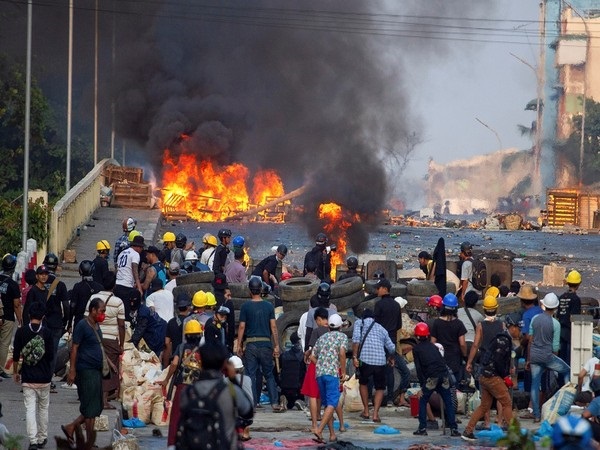Myanmar's civil war spreading from remote frontier areas to urban centres
Unclaimed attacks on Myanmar military airbases signal a possible spread of civil war from remote frontier areas to urban centres.

- Country:
- Myanmar
Unclaimed attacks on Myanmar military airbases signal a possible spread of civil war from remote frontier areas to urban centres. No group has yet claimed responsibility for the attack but security analysts believe the shadowy attacks are likely the work of an alliance between ethnic rebels and urban-based pro-democracy dissidents with the former providing the explosives and the latter knowledge of local conditions in the Myanmar heartland, reported Asia Times.
Bertil Lintner, writing in Asia Times, said if the analyst's assessment is accurate and the hits were not isolated incidents, it could mean that Myanmar's long-running and low-intensity civil wars are spreading from ethnic minority areas in the nation's periphery to major cities and towns. Three months after top generals seized power from a popularly elected government in February 1 coup and despite the fact that military, police have gunned down over 750 and arrested well over 4,000 protesters and people are still bravely taking to the streets to vent their anger with the coup.
The ongoing popular resistance underscores what is by now widely seen as perhaps the most unsuccessful coup in modern Asian history, wrote Lintner. As per Asia Times, military insiders like veterans of previous ruling juntas, namely the State Law and Order Restoration Council (SLORC) and State Peace and Development Council (SPDC), are growing wary of coup leader Senior General Min Aung Hlaing as ineffective and polarizing actions and tactics.
Recent developments, including the attacks on military airbases, have opened Pandora's box of possibilities and scenarios that were largely unforeseen when the tanks rolled into the main city of Yangon three months ago and scores of elected MPs and other politicians were arrested and detained in the capital Naypyitaw. Those include a wider civil war in the nation's central region heartland, including near the generals' bunker-like capital at Naypyidaw. On April 29, unidentified militants fired rockets at air force bases in Magwe and Meiktila in central Myanmar.
Another explosion detonated at a Myanmar Army weapons storage facility near Bago city, about 70 kilometres north of Yangon. Those attacks came after intense fighting between the Myanmar military, known as Tatmadaw, and ethnic rebels from the Karen National Liberation Army (KNLA) on the border with Thailand.
The shadowy unclaimed attacks on airbases also coincided with intensified battles with the Kachin Independence Army (KIA) in the country's far north, where many pro-democracy activists have sought refuge after bloody crackdowns in urban areas, wrote Lintner. Indeed, recent developments seem to signal the beginning of hitherto unseen urban warfare, which the Tatmadaw is ill-equipped to handle.
Apart from the obvious alliances between informal groups of pro-democracy activists and ethnic rebels, local resistance forces have already emerged in Sagaing Region and Chin state. Reports indicate similar forces are coalescing in Mon state and Mandalay Region, reported Asia Times. Social media posts show those local partisans are equipped with hunting rifles and homemade explosives but have nonetheless been able to inflict significant casualties on the police and military, including in Kalay in Sagaing Region.
In nearby Chin state, a new force called the Chinland Defense Force reportedly killed 15 junta troops in their area, reported Asia Times. Shadowy bomb and Molotov cocktail attacks have been reported against police stations in Yangon, Mandalay and Monywa.
In Kayin State, the Free Burma Rangers non-governmental organization reports daily fights between the Tatmadaw and KNLA, despite the fact the two sides entered a ceasefire agreement in October 2015. (ANI)
(This story has not been edited by Devdiscourse staff and is auto-generated from a syndicated feed.)










